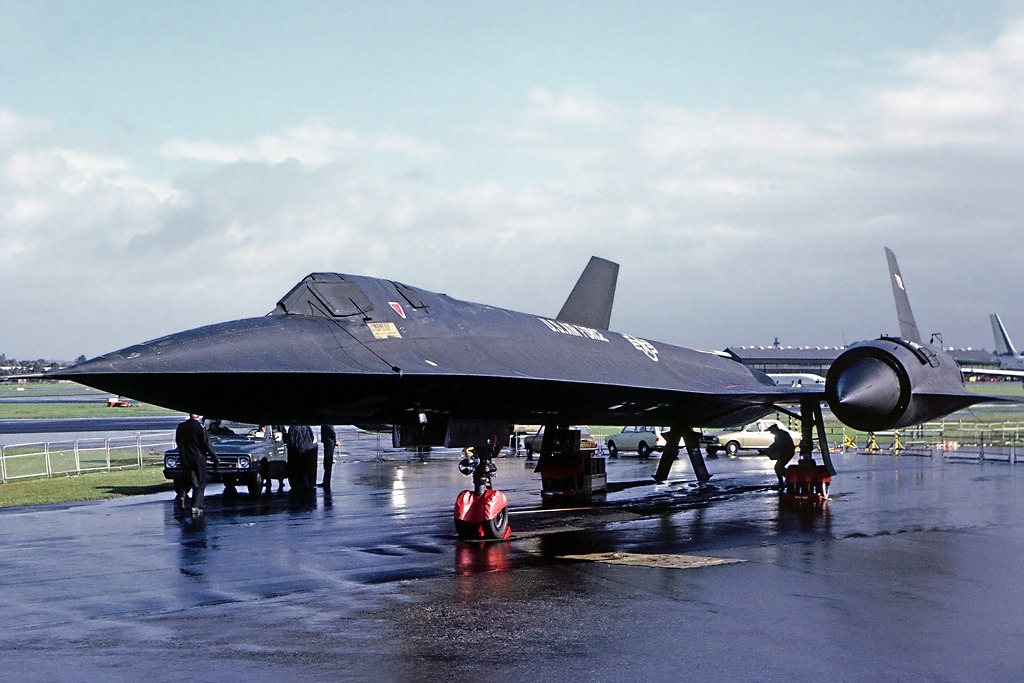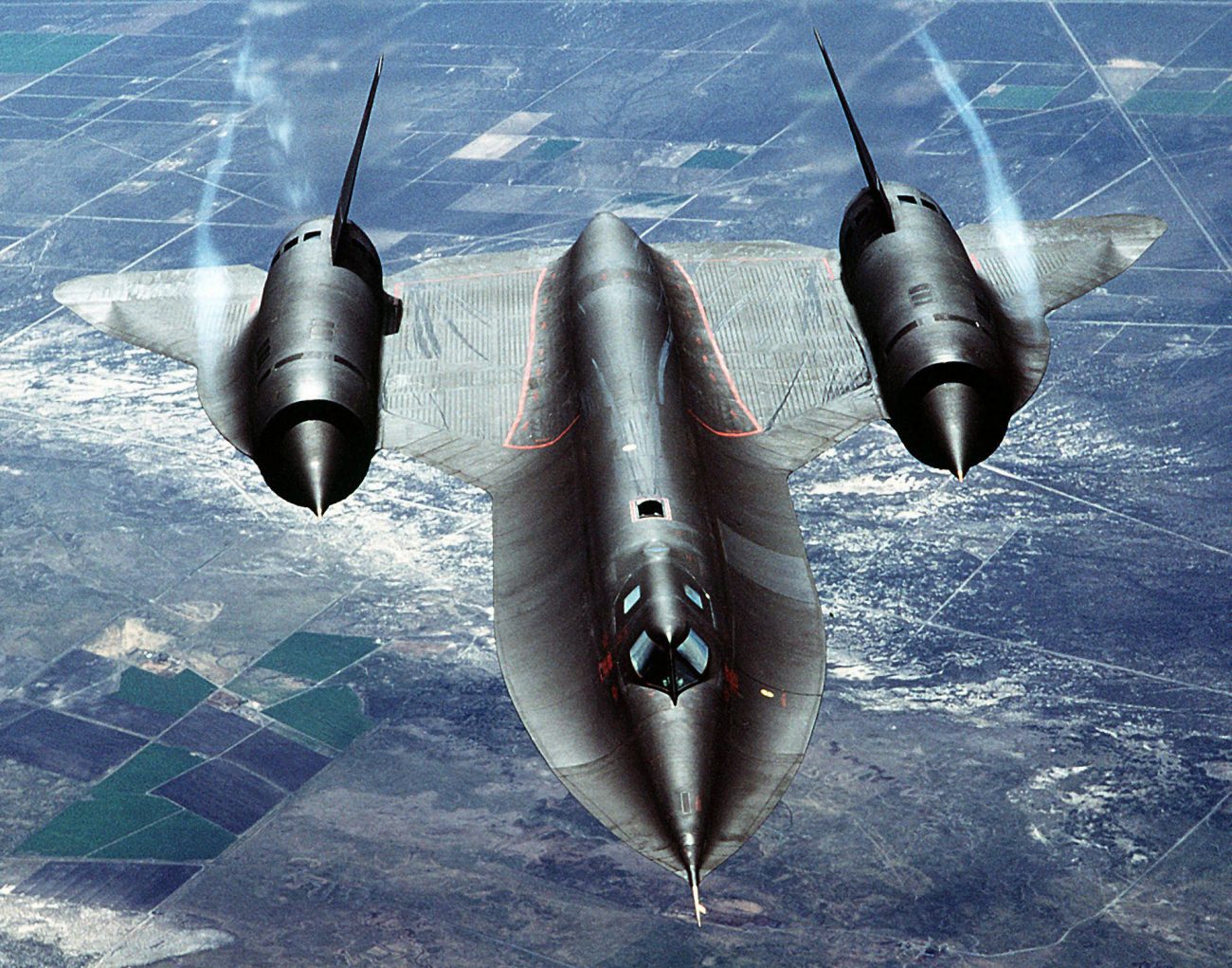It was 25 years ago when the iconic SR-71 ‘Blackbird’ combat aircraft, renowned for being the fastest operational aircraft of all time, took to the skies for its final flight.
The SR-71 Blackbird was the fastest air-breathing aircraft to ever see active service, with a maximum cruise speed of Mach 3.2.
The aircraft was retired just before the turn of the century, yet its legacy endures, with aviation enthusiasts commemorating its farewell flight each year.
The Blackbird completed its last journey on October 9, 1999, during an Air Show and Open House held at the Edwards Air Force Base (AFB). On the day of its final flight 25 years ago, the SR-71 lifted off and climbed an altitude of 80,100 feet.
Before the SR-71 reached supersonic speed, the pilot released a fuel dump, allowing the gathered spectators to estimate the plane’s position based on the sky’s streaks. This was followed by two loud sonic booms—one from the front and another from the rear of the aircraft as it went supersonic.
The plane descended within visual range of the audience for three fly-bys after attaining the incredible height and 3.2 Mach speed for which it was renowned. Several bystanders were moved to tears as the aircraft performed spectacular maneuvers and bid its final goodbye.
Designed to be a stealthy and superfast reconnaissance plane, the Lockheed SR-71 Blackbird set several speed records during its nearly 25 years in service.
As the fastest jet-powered reconnaissance aircraft in the world, the Blackbird navigated hostile airspaces like no other. It represented the peak of aircraft technology, excelling in both performance and operational success.
During the height of the Cold War, the SR-71 Blackbird was used for espionage operations over the Soviet Union. The Blackbird’s speed, at 36.55 miles per minute (3,216.4 feet per second), was faster than a bullet fired from an M1 Garand weapon from World War II, which had a muzzle velocity of 2,800 feet per second.
The Soviet Union had impressive aircraft like the MiG-25 Foxbat, which attempted to intercept the SR-71 several times but without success. The United States developed the Blackbird to infiltrate enemy territory covertly in an era preceding satellites and drones.
The blazing-fast aircraft could even outfly a missile while cruising close to the edge of space. Due to its high-altitude flying, electronic countermeasures, and Mach 3 speed advantage over surface-to-air missiles (SAMs), it was believed that the aircraft was invincible and impossible to bring down.

Due to the time needed to prepare it for the next mission, each SR-71 could fly an average of once a week. Intriguingly, the United States built only 32 Blackbirds. Of these, at least 12 were lost in accidents, leaving the country with just 20 airframes. Several surviving Blackbirds are now displayed at museums across the US.
Even though there were instances of engagement and confrontation between the Blackbird and Soviet and other foreign aircraft, no Blackbird was ever shot down.
The Blackbird experienced a narrow escape once, involving a Saab JA-37 Viggen from the Swedish Air Force, which was successful in achieving a missile lock and visual identification of the renowned aircraft. Nevertheless, the Blackbird emerged from the encounter unscathed.
Despite being a technological marvel, the aircraft fell out of favor and became unsustainable for the United States. The Soviet collapse, which destroyed the primary reconnaissance target for the SR-71, was largely to blame for the change in attitude.
Additionally, the egregious cost of the SR-71 also became harder to defend, especially since satellites and other alternative reconnaissance platforms were accessible as a more affordable and efficient option.
So, the Blackbird was retired in 1990, even before the disintegration of the Soviet Union. The US Air Force later reactivated three of the jets for a limited period between 1995 and 1998 at the request of Congress. NASA continued to use the aircraft for research flights until 1999, when the aircraft set out on its one last flight and captivated the audience.
Still As Iconic As Ever!
The Blackbird still enjoys cult status among aviation enthusiasts and pilots who have had a chance to fly it, 25 years after its last flight.
The aircraft set several world records during its lifespan. However, history was made in September 1974 when two men accomplished the fastest-ever trip from New York to London on the SR-71 Blackbird in less than two hours at three times the speed of sound.
The flight was conducted by a two-person crew from the US Air Force Lockheed Blackbird SR-71, comprising operator Noel Widdifield and pilot James Sullivan. The aircraft arrived victorious at the Hampshire Air Show in Farnborough, London, to a raucous reception. The journey between the two cities took one hour, 54 minutes, and 56 seconds.

The journey back to the United States saw the setting of yet another remarkable speed record. From London to Los Angeles, Captain Harold B. Adams, a 31-year-old pilot, and Major William Machorek, a 32-year-old reconnaissance systems operator, broke the speed record. In 3 hours, 47 minutes, and 39 seconds, they covered a distance of 5,447 statute miles, achieving an average speed of 1,435 miles per hour.
The difference in the two-speed records arose from the necessity of refueling and the requirement to decelerate over major US cities. Nevertheless, during two separate flights in 1974, the SR-71 set records for the highest sustained flight and the quickest travel time between London and New York.
Another record was made two years later, in 1976, when the Blackbird surpassed its predecessor, the nearly equivalent Lockheed YF-12, to become the fastest air-breathing manned aircraft.
Twenty-five years since its last flight, all three records still hold.
As for performance and operational accomplishments, the world has yet to see an operational aircraft reach the milestones the Blackbird achieved during service. This probably accounts for the aircraft’s enduring memories and achievements, even 25 years after its final flight.
- Contact the author at sakshi.tiwari9555 (at) gmail.com
- Follow EurAsian Times on Google News




